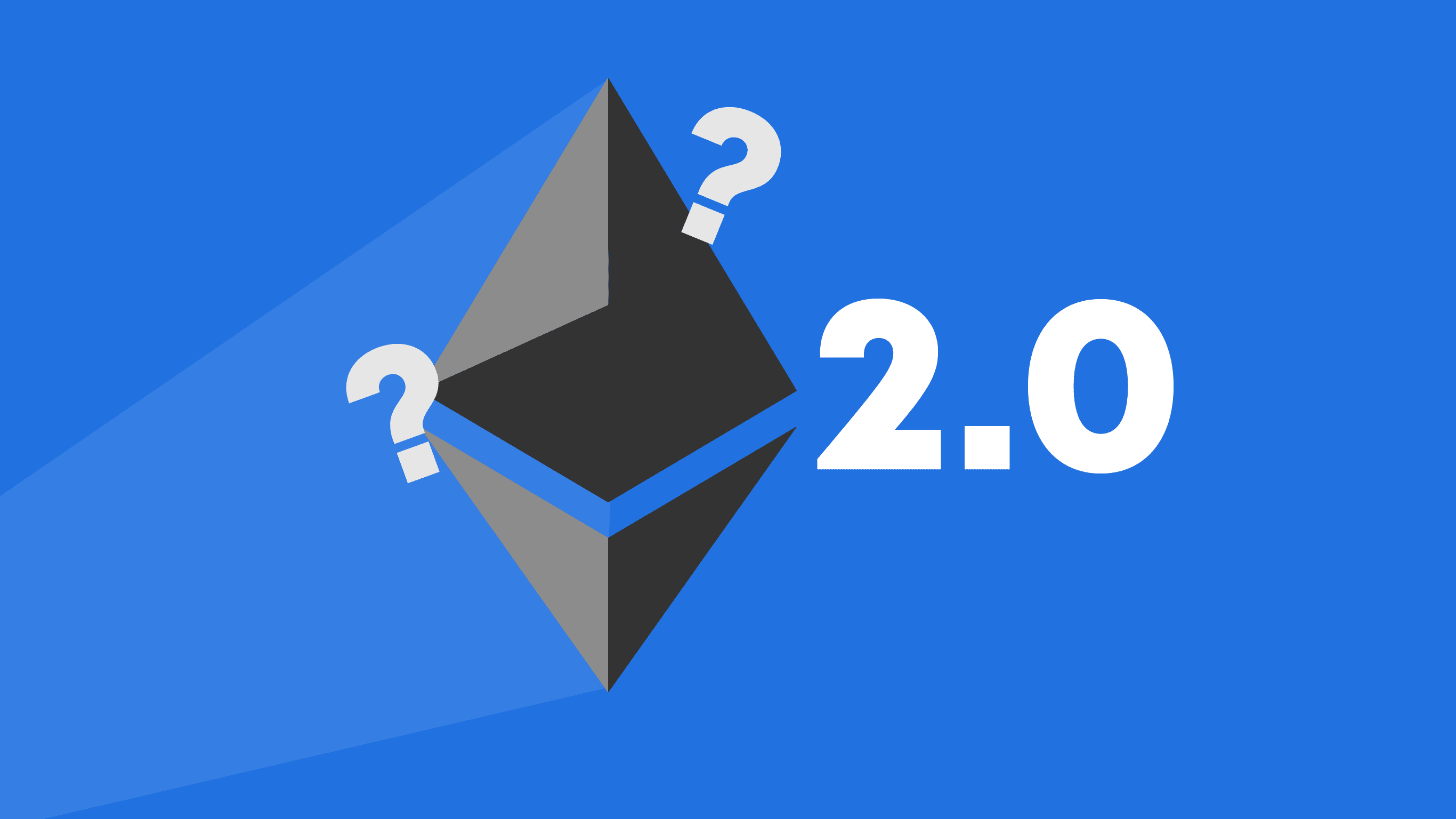You have most likely heard of the major players in the cryptocurrency game by now. Bitcoin and Ethereum tend to be in the headlines, and most people with a minor interest in the realm of crypto have heard of these two significant players.
Ethereum 2.0 is an evolution of the Ethereum most crypto-investors or enthusiasts are familiar with. Although it has not been released yet, Ethereum 2.0 offers an improved framework for Ethereum. Ethereum 2.0 boasts faster transactions, lower fees, and a safer structure. Most importantly, Ethereum 2.0 will come with a shift from a proof-of-work to a proof-of-stake model.
ETH 1.0 vs ETH 2.0
The main difference between Ethereum 1.0 and Ethereum 2.0 is how they use a consensus mechanism. Ethereum 1.0 uses a proof of work model much like other cryptocurrencies. With the proof of work model, a miner devotes the processing power of a machine to perform complex mathematical tasks. When these mathematical feats are completed, transactions are verified and added to the blockchain. When miners complete a mathematical task and add it to the blockchain, they receive Ethereum in exchange for devoting their processing power.
Ethereum 1.0 requires miners to spend time and computing power to add to the blockchain. This process requires an excessive amount of energy and time to complete. A proof-of-work model is highly contested because it is not energy-efficient and causes a considerable risk to the environment.
Ethereum 2.0 is different in that it uses an entirely different validation system. This system is called proof-of-stake. POS was explicitly designed as an alternative for proof-of-work and requires fewer validators and less processing power to work. In a POS model, possible validators have to offer a stake to earn the opportunity to become a validator and mine coins. In a POS system, validators are randomly chosen from those who put up a stake. Those validators can then validate blocks in the blockchain and receive the coin in return. When several validators validate a block, it is finished and added to the blockchain.
The POS system is more secure and far more energy-efficient than the proof of work model. This is because it requires collateral from validators upfront. This model offers less incentive for theft and involves way less computational power.
How to stake with ETH 2.0
Ethereum 2.0 offers a variety of ways to stake your Ethereum in exchange for a chance to become a validator or participate in the validation process.
Solo Home Staking
Solo home staking requires you to have at least 32 ETH ready to stake and a dedicated computer that can connect to the internet at all times. This allows you to contribute to the blockchain’s validation directly and earn rewards in return. In solo home staking, you are the only person who deals with your funds, and you are directly helping decentralize and secure the Ethereum blockchain.
Solo home staking requires a bit of knowledge and experience, allowing you to receive a more secure experience while mining new coins.
Staking as a Service
Staking as a service takes the complicated steps of solo home staking out of the equation. You offer up your 32 ETH, and a third-party service runs your node for you. You hold on to your access keys and earn native rewards, but you do not need to have the skills or hardware to stake on your own. However, you will need to trust a separate person or company with your stake.
In addition, these third-party services are at risk for attacks or regulations that you have no control over.
Pooled Staking
Pooled staking is your best option if you are not able or willing to offer up the entire 32 ETH needed for a stake. Pooling allows investors with small amounts of ETH to gather up their funds until they hit a collective 32 ETH. A third party then runs the validator operations.
Those who enter a pool will often receive liquidity tokens representing the amount of ETH you have invested and earned from the pooled stake. This staking option offers the smallest barrier to entry and the lowest risk. However, pooled staking does pose a risk because you are trusting a group of others as well as a third party to run the validation node.
Where to Stake Ethereum
Depending on the type of stake you are looking for, there are a variety of places you can stake Ethereum 2.0. The easiest and safest way is to do this directly through Ethereum. This will ensure that you are adding to the decentralization and security of the Ethereum blockchain. It will also ensure that your rewards come directly from the source and you are not left trusting a third party.
If you are unable or unsure about staking Ethereum, several centralized exchanges like Coinbase and Crypto.com offer pooled staking. However, Ethereum itself warns against this option because it creates a centralized target where a large amount of staking is being done. Since these companies collect a large amount of ETH and hold many validator access keys, they become a huge target for those looking to make a quick buck through a cyberattack. If you are looking to stake Ethereum, be sure to do your research and choose a platform you trust with your investment.
When is ETH 2.0 coming?
Ethereum 2.0 was initially scheduled to be released in 2019. However, because of several delays, the first phase did not launch until December of 2020. With two more phases to be completed, Ethereum 2.0’s launch date is not fully concrete. Experts expect the full rollout of Ethereum 2.0 to be fully integrated by the end of 2023.
The project has come across several delays over the last couple of years, so the estimated release date of 2023 could always be extended based on the progress of Tim Beiko and the development team.








